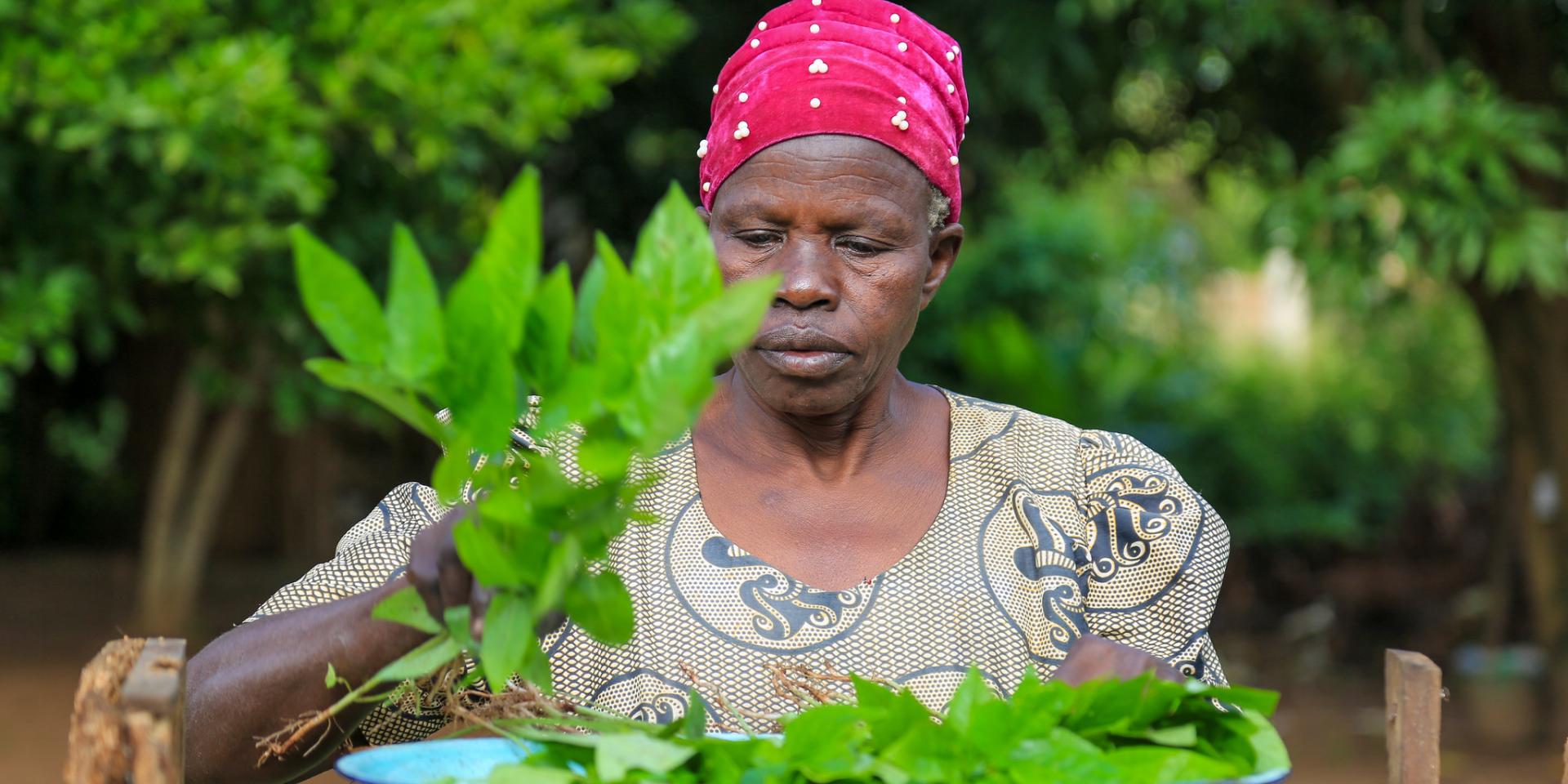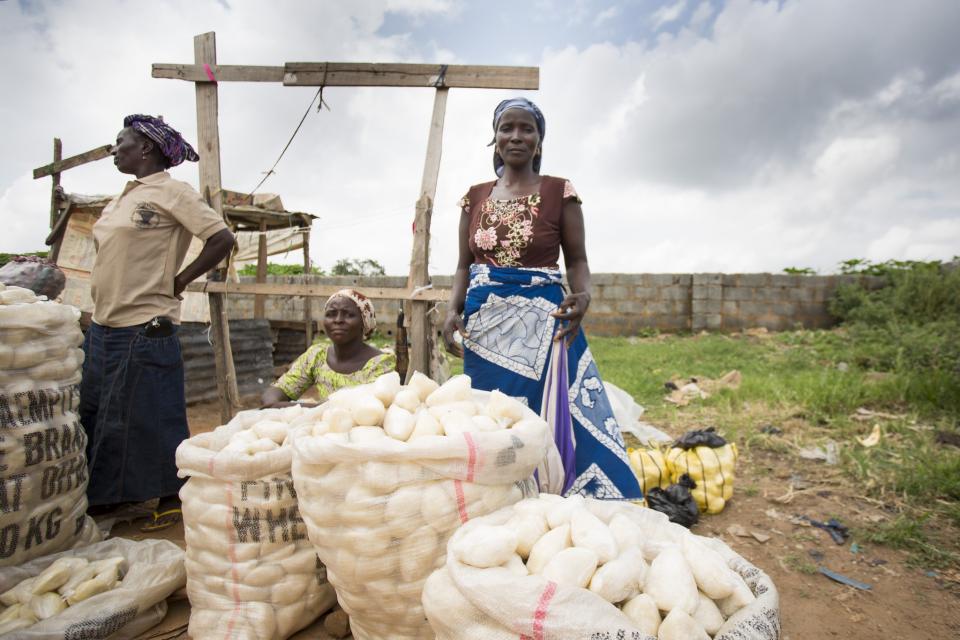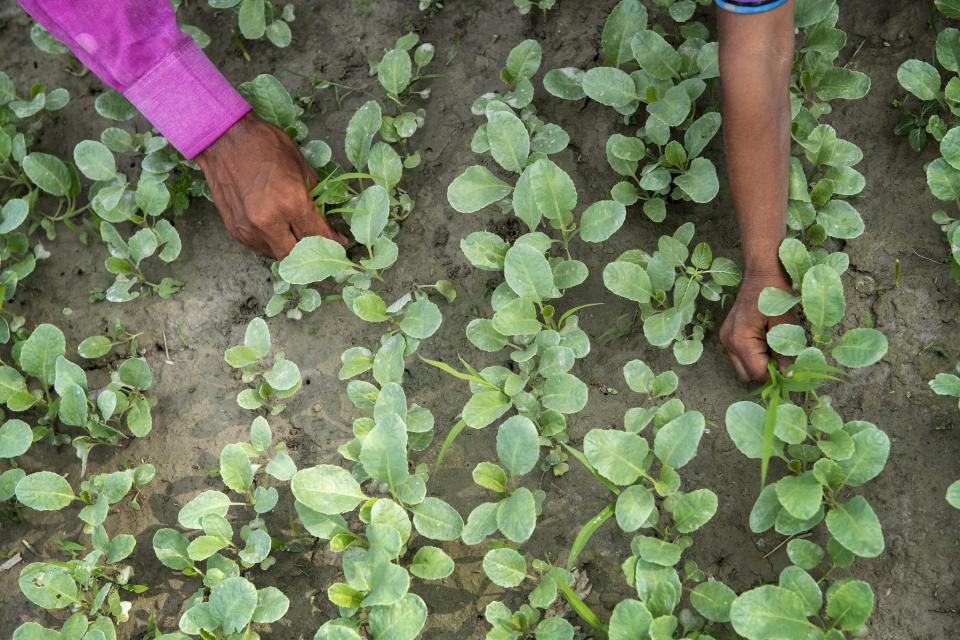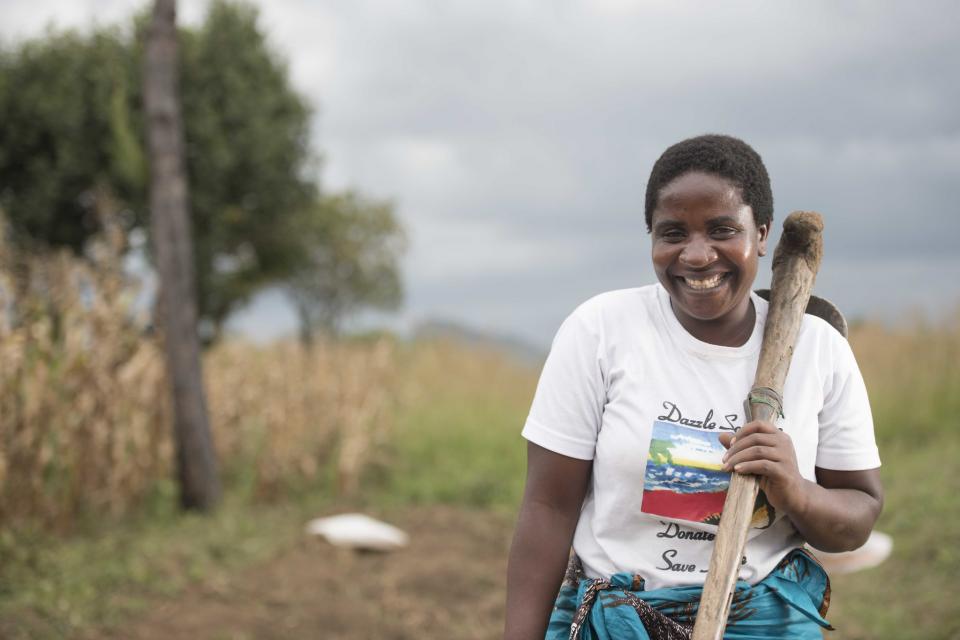Africa RISING launches manual on participatory tools for gender-transformative decision making

Josephine Atek is a 65-year-old vendor and farmer from the Bardege Division in Gulu District, who produces her own food and sometimes buys from the market.
Photo Credit: Joseph Muhumuza.
A new manual outlining how extensionists, development partners and policymakers can promote gender-transformative decision making by smallholders when introducing new technologies has been launched by the Africa RISING gender team. Titled, Gender-transformative decision-making on agricultural technologies: Participatory tools, the 76-paged manual is the latest amongst a series of publications produced by the Africa RISING program promoting gender-transformative approaches.
“This manual provides a set of easy-to-use decision-support tools that when applied correctly, would enable smallholders to make good, gender-equitable decisions around which technologies to adopt,” explains Dr. Gundula Fischer, Africa RISING Gender Lead and one of the Co-authors of the manual.
“The tools are based on Gender Action Learning System (GALS) tools which have been further tailored to cater for assisting farmers to take informed decisions about technologies. The advantage is that these tools can be used by literate and non-literate people. For examples, to use the manual, farmers draw rather than write their aspirations and challenges,” she adds.
The manual builds on the recognition that farmers are already using innovative approaches and combining these with their own knowledge to improve productivity, diversify, strengthen their nutrition and to build climate resilient livelihoods. At the same time, the manual provides ways to close the “gender gap” in access to, and benefits from, technologies in ways that benefit the whole family. This is important because Africa RISING has, over the past decade, generated a large basket of scientifically tested and validated agricultural innovations from which women and men farmers, extension agents, development practitioners and policy makers can choose depending on their interest, needs and socio-economic, geographic and climatic contexts. The priority is now to get these technologies into use by everyone. Research shows this can be a challenge.


